MARIANI’S
Virtual
Gourmet
JULY
21, 2019
NEWSLETTER
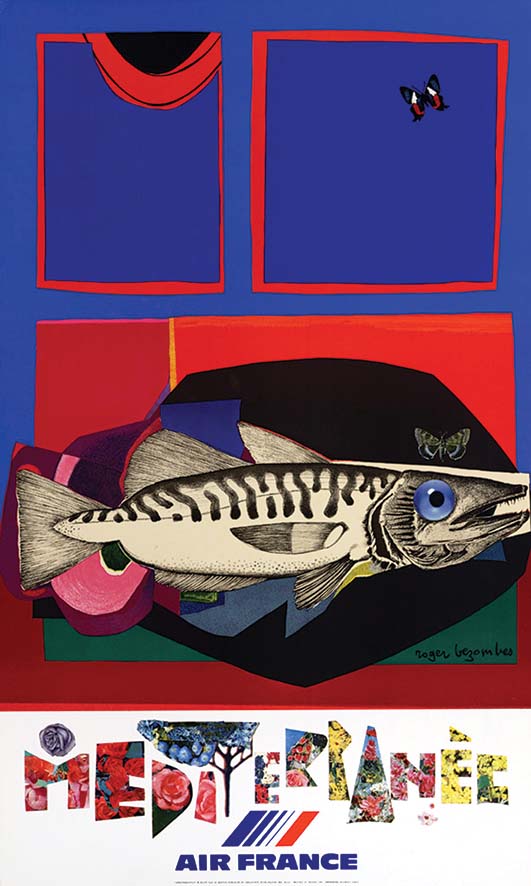
Air France Travel Poster by Roger Bezombes, circa 1965.
IN THIS ISSUE
STAYING AND DINING
AROUND LUCERNE
By John Mariani
NEW YORK CORNER
AUREOLE
By John Mariani
NOTES FROM THE WINE CELLAR
NOT YOUR FATHER'S CHIANTI
By Geoff Kalish
❖❖❖
STAYING AND DINING
AROUND LUCERNE
By John Mariani
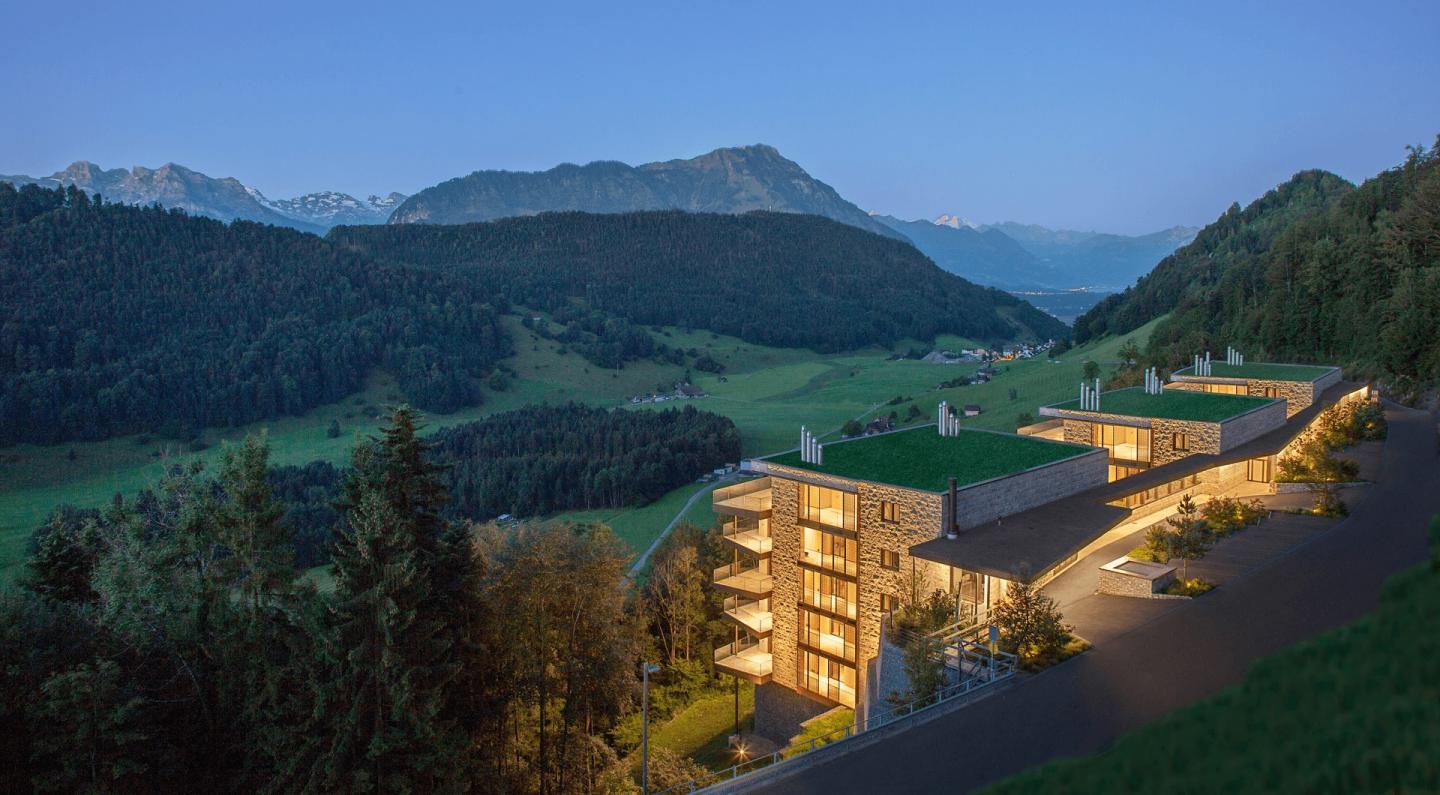
Bürgenstock Resort, Lake Lucerne
It
seems a given that anyone visiting the beautiful
city and region of Lucerne, Switzerland,
will be asked more than once if they have
visited Bürgenstock, the vast eagle’s nest
resort at the top of a 3,600-foot 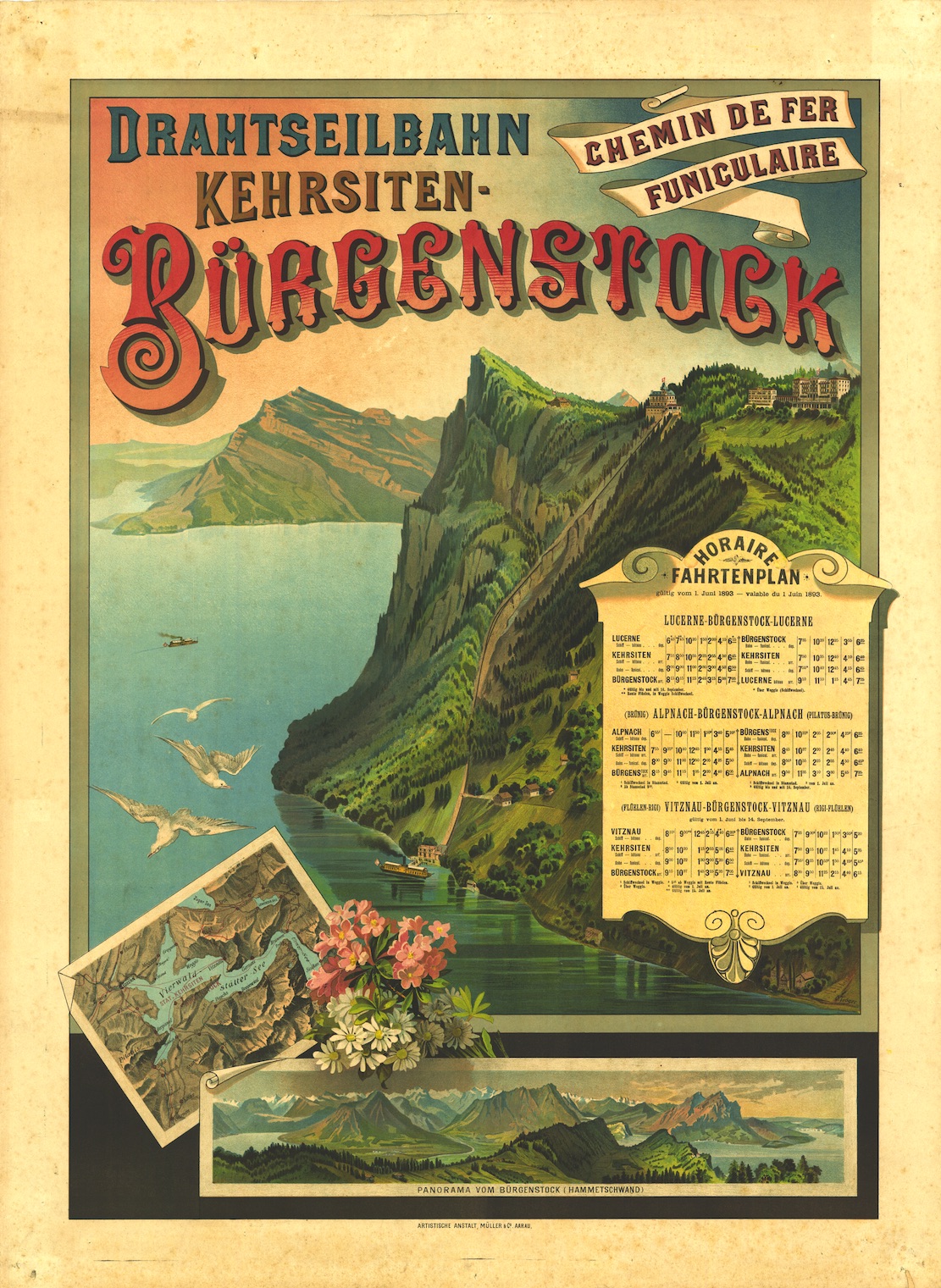 mountain
of the same name in the Uri Alps, reached by a
funicular after a breathtakingly beautiful boat
ride from the Lucerne Europaplatz docks.
mountain
of the same name in the Uri Alps, reached by a
funicular after a breathtakingly beautiful boat
ride from the Lucerne Europaplatz docks.
Now composed of four hotels, private residence suites, two spas, a wellness center and nine restaurants, the resort dates back to 1873 as the Grand Hotel and then the Park Hotel. From 1925 to 1996 the complex was owned by the Frey-Furst family, and immediately a parade of international notables came to marvel at the resort’s vast splendor, from Sophia Loren and Audrey Hepburn to Sean Connery, who stayed there while filming the Alps section of the 1964 movie “Goldfinger.”
In fact, Bürgenstock has the remote look of a
fabulously wealthy Bond villain’s lair, and the
funicular would make for a great action scene.
After several transfers of ownership and
management over the subsequent years, the resort
was bought by the Qatari
Diar Real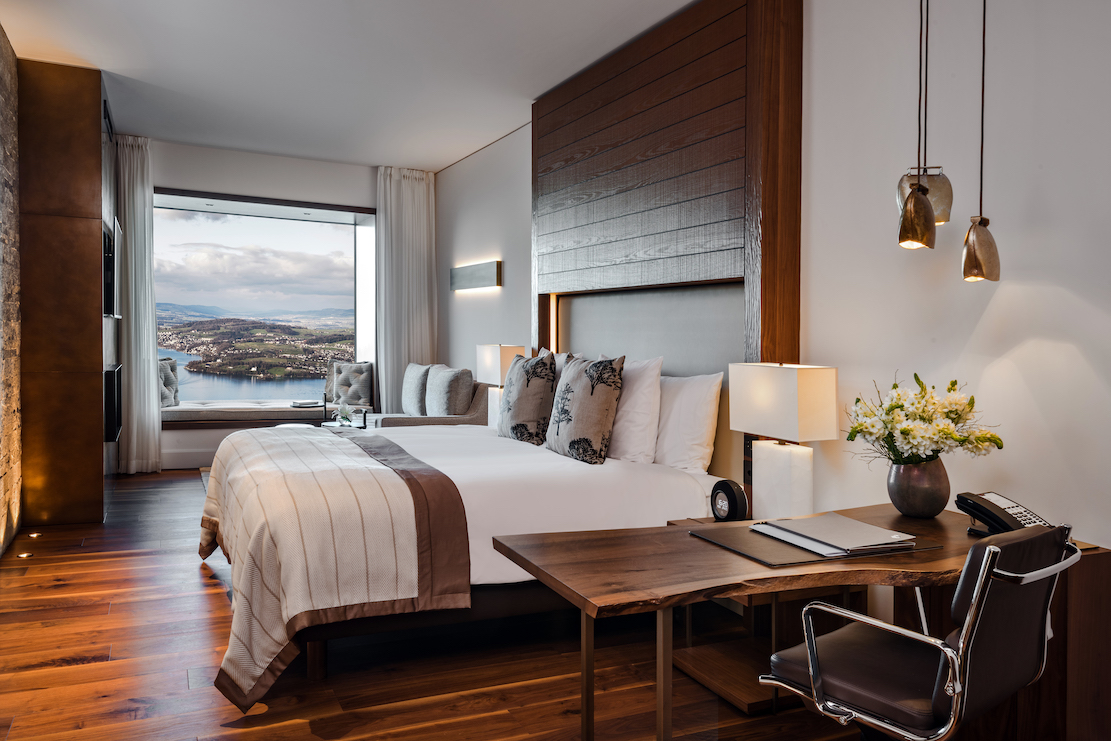 Estate
Investment Company, wholly owned by the State of
Qatar, and since 2013, more than 485 million CHF
has been invested, with a total re-opening in
2017.
Estate
Investment Company, wholly owned by the State of
Qatar, and since 2013, more than 485 million CHF
has been invested, with a total re-opening in
2017.
I haven’t the room in this column to detail all the attractions and amenities of the Bürgenstock, except to say that it ranks with the best of its kind as a mountain resort anywhere in Europe or the U.S. Its modern rooms have been carefully situated to take full advantage of the stunning panorama of Lake Lucerne, the trails into the woods are as very beautiful as they are restful, and the pool and spa offerings as up-to-the-moment as any.
I was able to dine at two of Bürgenstock’s restaurants, the casual and very handsome Spices and the more formal gastronomic dining salon, The Ritzcoffier.
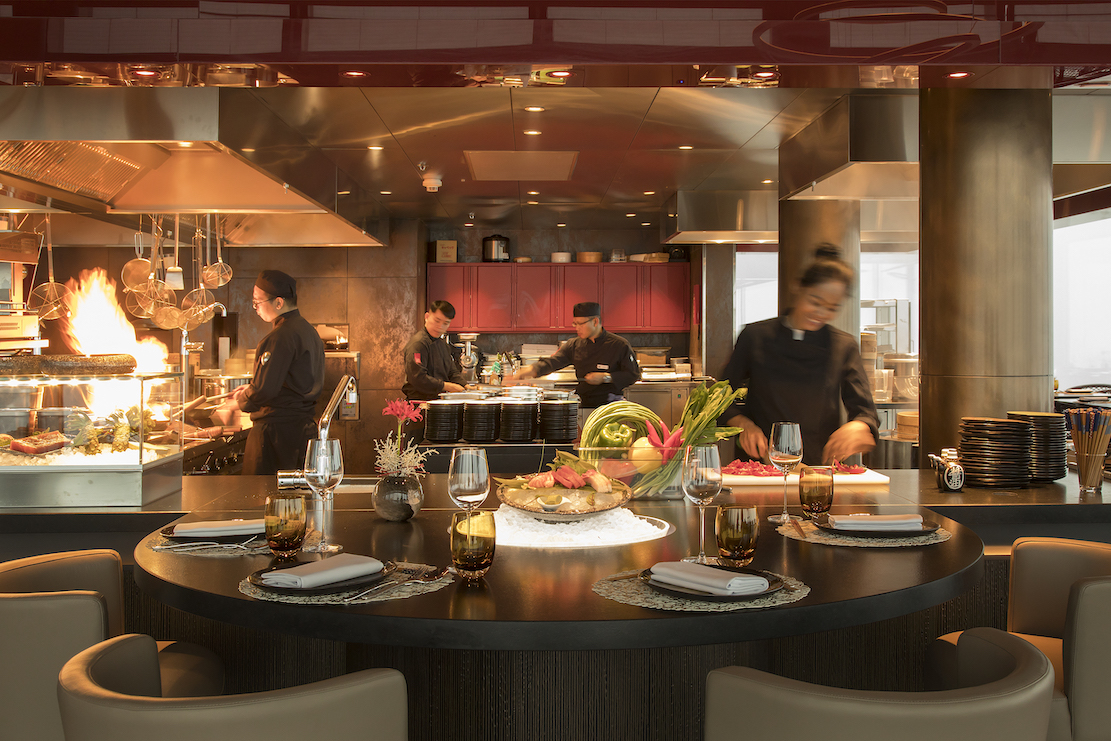 Spices has
a wrap-around window dining area with a large show
kitchen (left)
featuring Asian food culture that takes in China,
Japan, Thailand and India, including sushi and dim
sum. My wife and I enjoyed the six-course 80CHF
lunch that began with a grilled chicken and
tamarind salad; fried wonton with crabmeat and
chili; a lovely, aromatic Thai coconut soup with
sea bass; tandoori chicken with naan;
wok-seared beef with black pepper sauce; steamed
jasmine rice; and a chilled mango pudding. There
is also an extensive à la carte menu.
Spices has
a wrap-around window dining area with a large show
kitchen (left)
featuring Asian food culture that takes in China,
Japan, Thailand and India, including sushi and dim
sum. My wife and I enjoyed the six-course 80CHF
lunch that began with a grilled chicken and
tamarind salad; fried wonton with crabmeat and
chili; a lovely, aromatic Thai coconut soup with
sea bass; tandoori chicken with naan;
wok-seared beef with black pepper sauce; steamed
jasmine rice; and a chilled mango pudding. There
is also an extensive à la carte menu.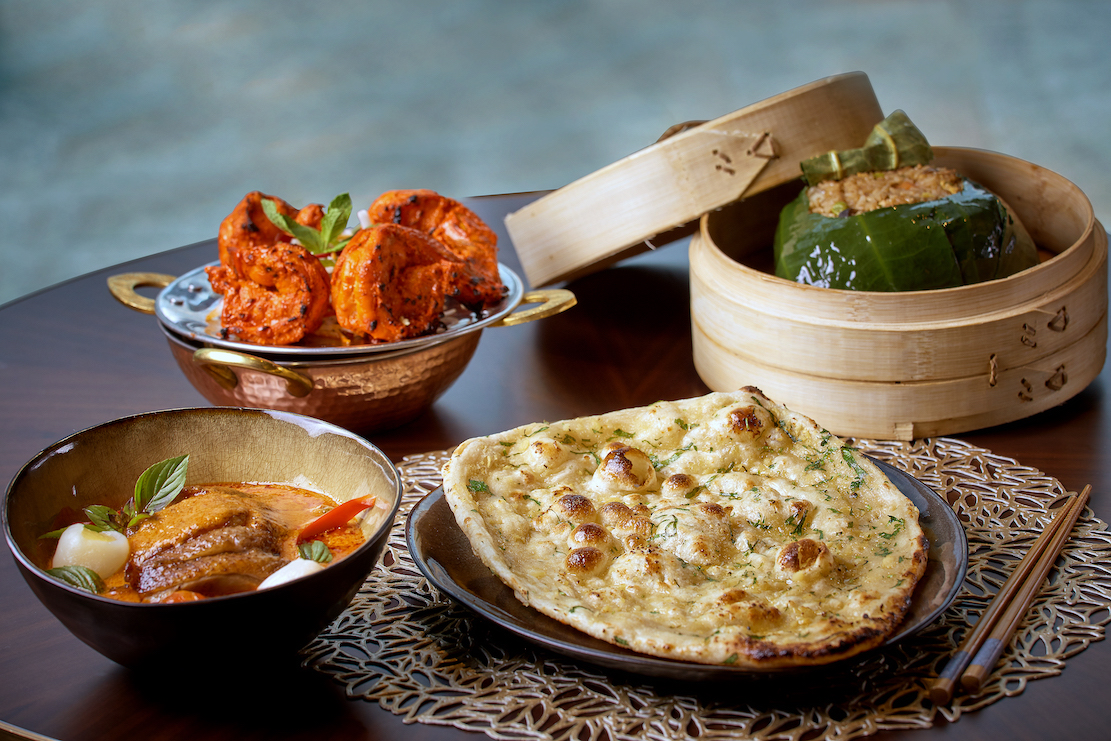
At the time we dined at the Ritzcoffier, a new, more casual dining room and open kitchen (below) was being built for the restaurant—now open—but we dined splendidly in an adjacent, more formal room, where we put ourselves in the hands of Chef de Cuisine Bertrand Charles, who works with France’s Marc Haeberlin on the sumptuous menu. Courses are remarkably well priced for this level of haute cuisine: three courses for 125CHF, four for 155CHF and five for 185CHF, with tax and service included.
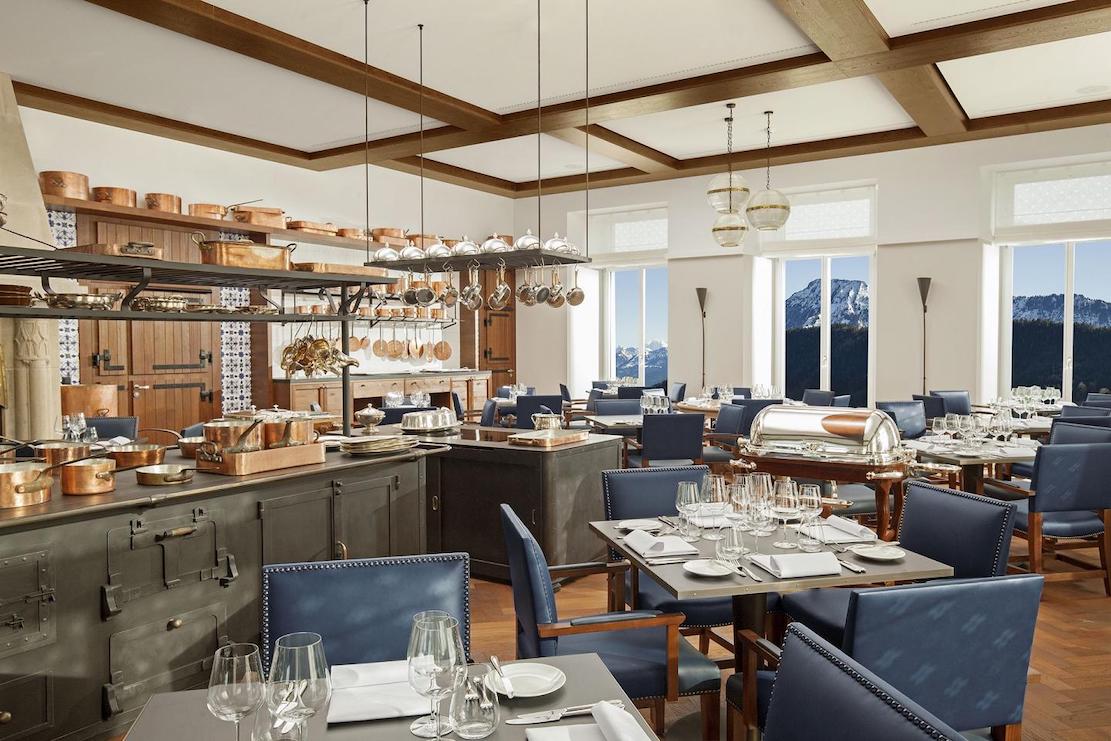 Charles told me, “I work
with local farmers, and they tell
me what is ready and when to cook with.”
Charles told me, “I work
with local farmers, and they tell
me what is ready and when to cook with.”
Among the
dishes we thoroughly enjoyed was Haeberlin’s silky
foie gras with gelée and brioche bread we learned
was made with equal amounts flour and butter; the
season’s sweet white asparagus with crayfish, a
dollop of caviar and 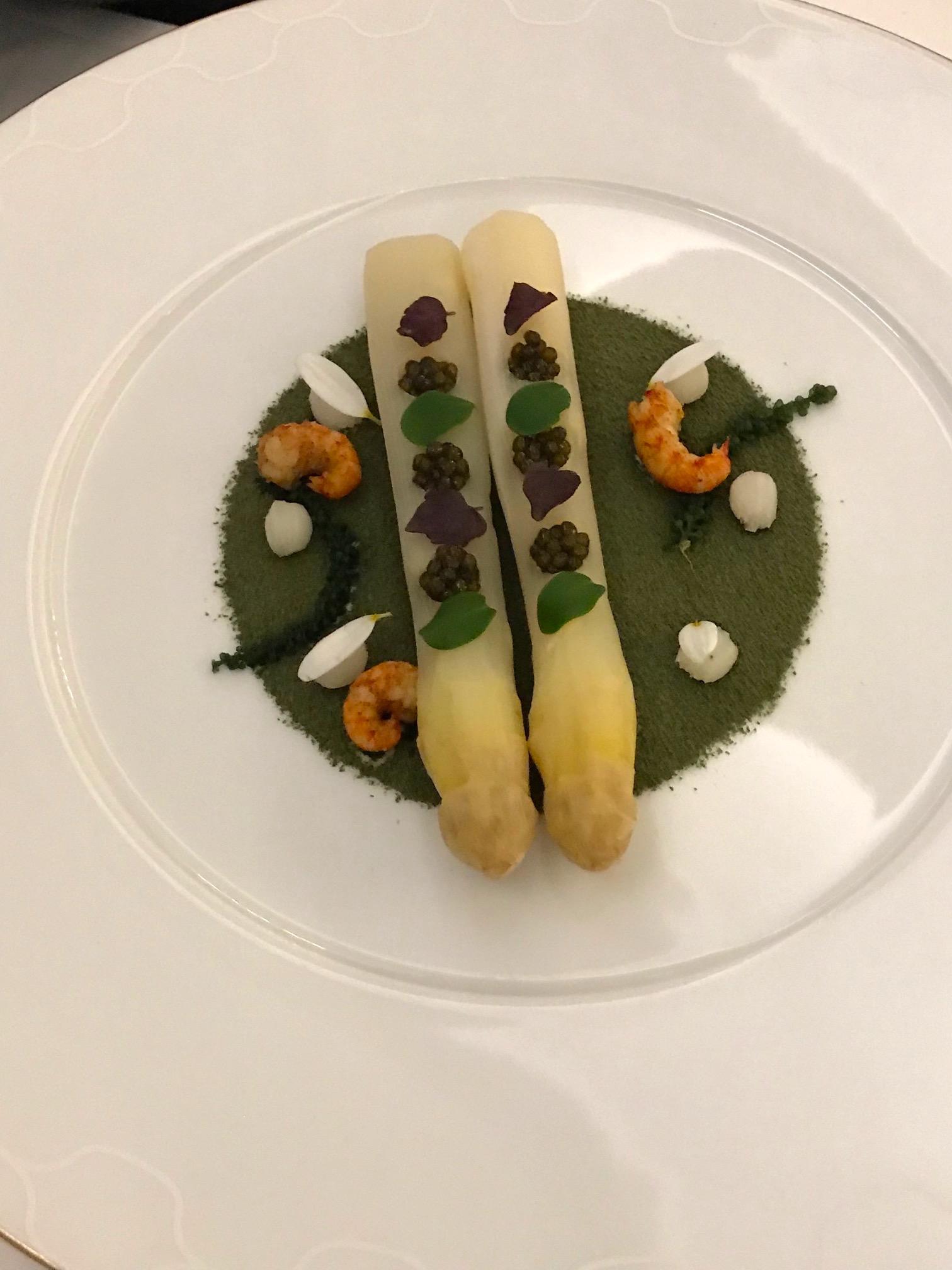 seaweed
dehydrated to look like “soil”; an odd dish of a
whole onion carved out to contain a rich duck
broth with potatoes, truffles and cheese; and
gorgeously pink slices of veal tenderloin with
carrots, peas and veal bacon. Haeberlin’s poached
pear with sabayon and a very moist Black Forest
Cake ended the meal. The wine list, I hardly need
mention, is one of the finest in the region. Now
that the new room is open, I assume the view from
a table must be spectacular and, even if you’re
not staying at the resort, a trip from Lucerne
would make for a highly romantic evening.
seaweed
dehydrated to look like “soil”; an odd dish of a
whole onion carved out to contain a rich duck
broth with potatoes, truffles and cheese; and
gorgeously pink slices of veal tenderloin with
carrots, peas and veal bacon. Haeberlin’s poached
pear with sabayon and a very moist Black Forest
Cake ended the meal. The wine list, I hardly need
mention, is one of the finest in the region. Now
that the new room is open, I assume the view from
a table must be spectacular and, even if you’re
not staying at the resort, a trip from Lucerne
would make for a highly romantic evening.
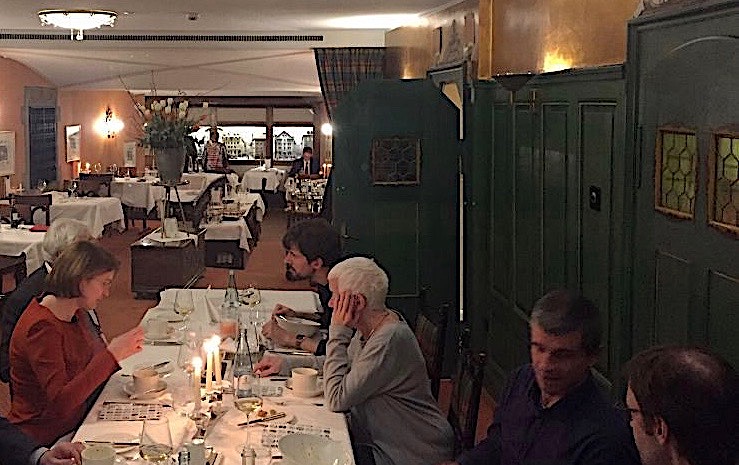 Back
in Lucerne itself, just about every kind of
restaurant is in ample supply, from Indian to
Vietnamese. Assuming, you’d want to have at least
one traditional Swiss meal, there are several good
options. An old favorite with a beautiful dining
room is Wilden
Mann (Bahnhofstrasse 30; +41
41 210 16 66),
which
dates as a hotel to 1860. The
restaurant has two rooms, the Bürgerstube, with
country furniture, ceiling beams and fireplace (left), and
the slightly
more formal Sauvage (Wilden Mann means “wild man”
of the mountains).
In recent years the menu has become more
international, but there are still plenty of
traditional dishes, from bauernschweins
bratwurst pork sausage with onion sauce
(26CHF) to Geschnetztes
Kalbfleish
Back
in Lucerne itself, just about every kind of
restaurant is in ample supply, from Indian to
Vietnamese. Assuming, you’d want to have at least
one traditional Swiss meal, there are several good
options. An old favorite with a beautiful dining
room is Wilden
Mann (Bahnhofstrasse 30; +41
41 210 16 66),
which
dates as a hotel to 1860. The
restaurant has two rooms, the Bürgerstube, with
country furniture, ceiling beams and fireplace (left), and
the slightly
more formal Sauvage (Wilden Mann means “wild man”
of the mountains).
In recent years the menu has become more
international, but there are still plenty of
traditional dishes, from bauernschweins
bratwurst pork sausage with onion sauce
(26CHF) to Geschnetztes
Kalbfleish 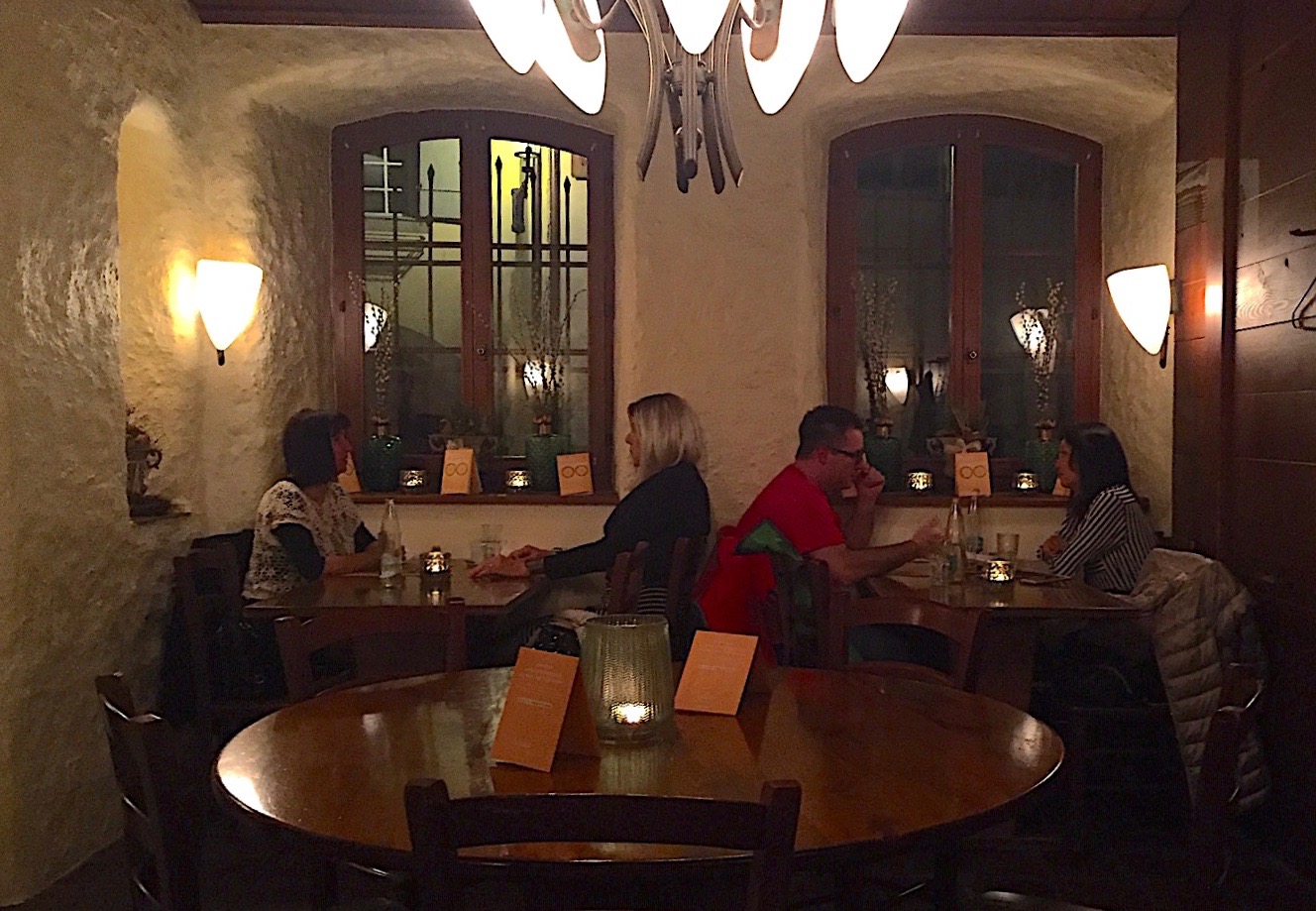 (veal
stew) with rösti
potatoes
(39CHF). Desserts are negligible. The wine list is
strong in bottlings from Vaud.
(veal
stew) with rösti
potatoes
(39CHF). Desserts are negligible. The wine list is
strong in bottlings from Vaud.
More rustic and cozier is Wirsthaus Taube (Burgerstrasse 3, +41 41 210 07 47), with stucco and wood walls, graceful archways (right) and both a local and tourist clientele that pack the place, not least for the modestly priced menus and huge portions, including a two-course offering of the day’s soup or salad and fried pork schnitzel for 21.80CHF or char filet for 28.80CHF. The menu is large, the wine list poor, so have a good Swiss beer like Ur Bräu. One of the heartiest of dishes is rösti potatoes with a fried egg, tomato, bacon and melted cheese that requires a good walk afterwards.
Since
Switzerland has its German, French and Italian
cantons, you can expect excellent examples of
their cuisines, not least Italian, which I found
at Barbatti
(Töpferstrasse
10, +41 41 410 13 41), one of the cheeriest
spots in town, with a large dining room decorated
with antique furniture, crystal chandeliers and
busts of what I assume are ancient Romans (left). The
place is packed at lunch and dinner and the staff
is very fast paced, with a menu just large enough
for the kitchen to maintain consistency at peak
hours. For appetizers there are carpaccios, one of
beef (24CHF), the other of octopus (23CHF), and a
zuppa di
pesce (15CHF).
The pastas number eight selections, and we very much enjoyed the potato gnocchi (right) with sweet tomatoes (a special that day for 21CHF or 27CHF for small and large portions) and light, delicate ravioli stuffed with eggplant in a tomato basil sauce (21CHF/27CHF). There is a mixed grill of local seafood (48CHF) and calf’s liver alla veneziana with sweet onions and balsamic vinegar (39CHF). The wine list is largely Italian and not cheap. They also offer a children’s menu.
Remember, service and tax are included in the price of the food, so tipping should be minimal, no more than 10 percent for special service.
❖❖❖
By John Mariani
One Bryant Park
135 West 42nd Street (off Sixth Avenue)
212-319-1660
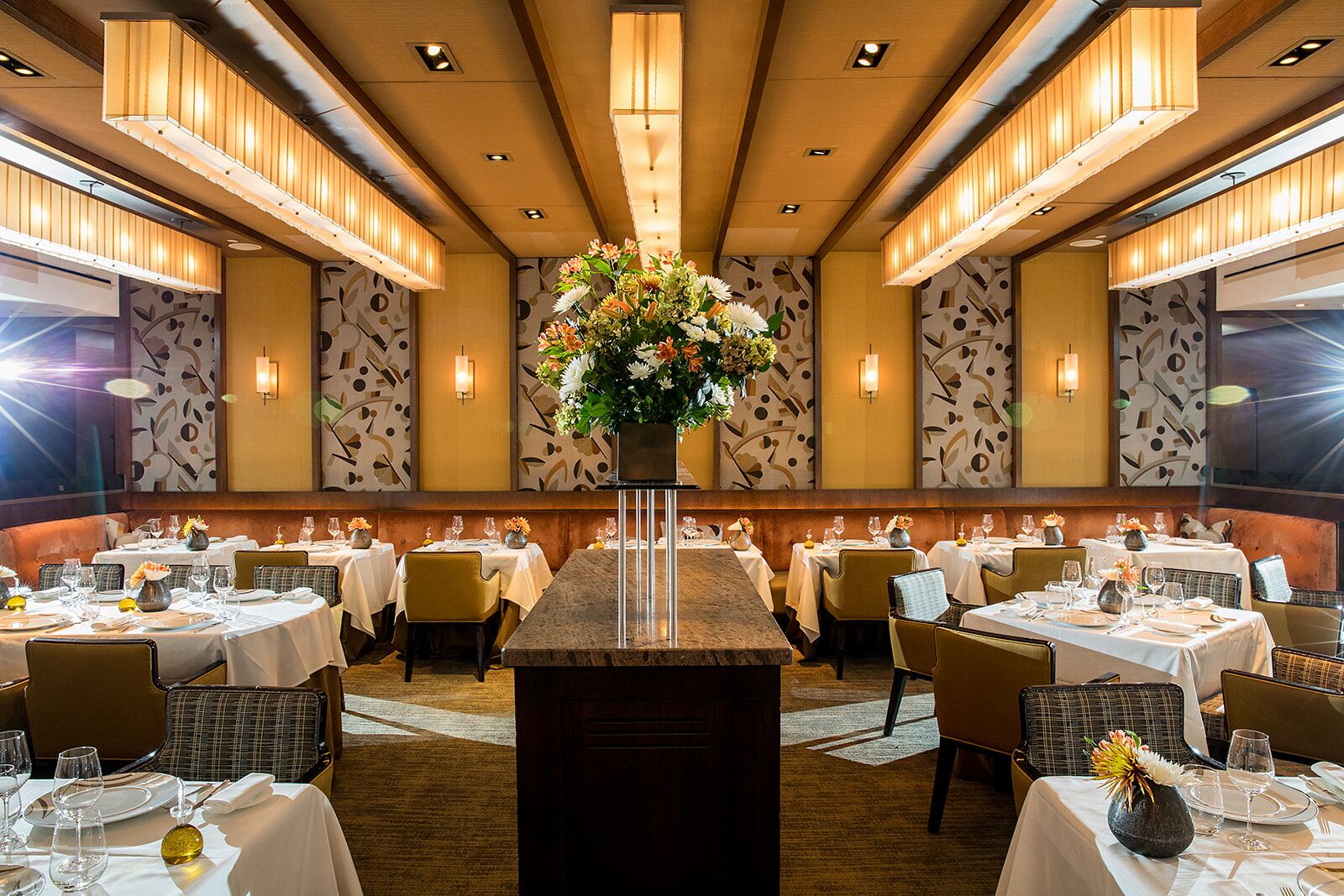
The very civilized, now classic, Aureole continues, after more than a quarter of a century, to perform in the top ranks of New York restaurants and, therefore, of any U.S. city. It is a beautiful but not highly formal dining room, wonderfully lighted from overhead and done in soft colors with panels papered in a jazzy art deco graphic and centered with a bountiful vase of the season’s flowers.
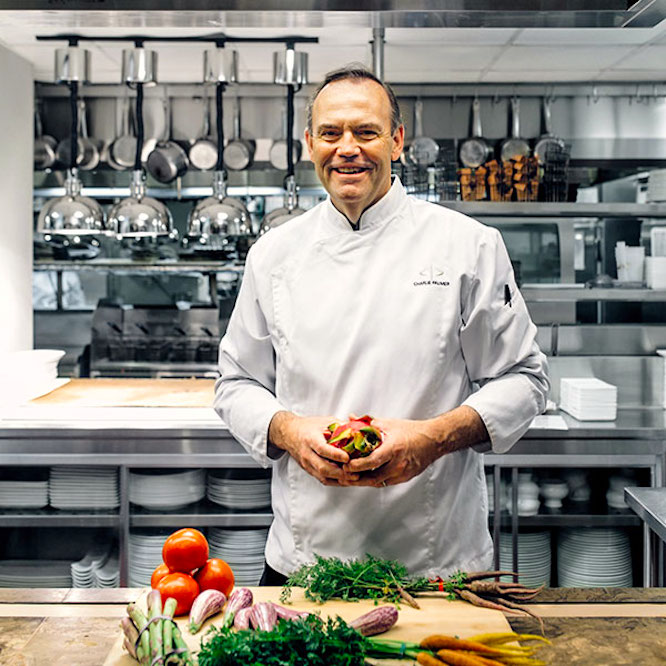 Owner
Charlie Palmer began as a chef and now has his
name on more than a dozen restaurants, and a
hotel in Healdsburg, California, where he
lives. (There is another Aureole in Las Vegas
that is a lot flashier, complete with women in
cat suits swinging from wires in a
glass-enclosed tower to retrieve your wine
bottle. Whatever.)
Owner
Charlie Palmer began as a chef and now has his
name on more than a dozen restaurants, and a
hotel in Healdsburg, California, where he
lives. (There is another Aureole in Las Vegas
that is a lot flashier, complete with women in
cat suits swinging from wires in a
glass-enclosed tower to retrieve your wine
bottle. Whatever.)
Once located in an East Side townhouse, Aureole
is now in the Bank of America Tower on 42nd
Street, near Bryant Park, with a casual bar area
called the Liberty Room with a separate menu and
the restaurant adjacent to it, happily avoiding
the noise of the six o’clock crowd next door. To
the right is part of Aureole’s magnificent wine
cache, stacked behind a dramatic glass wall. The
list is one of the best and finest in New
York—55 pages
long, 1,425 labels and 9,200 bottles—not
just in breadth and depth but in selectivity,
and many of the trophy wines are priced
considerably below the same 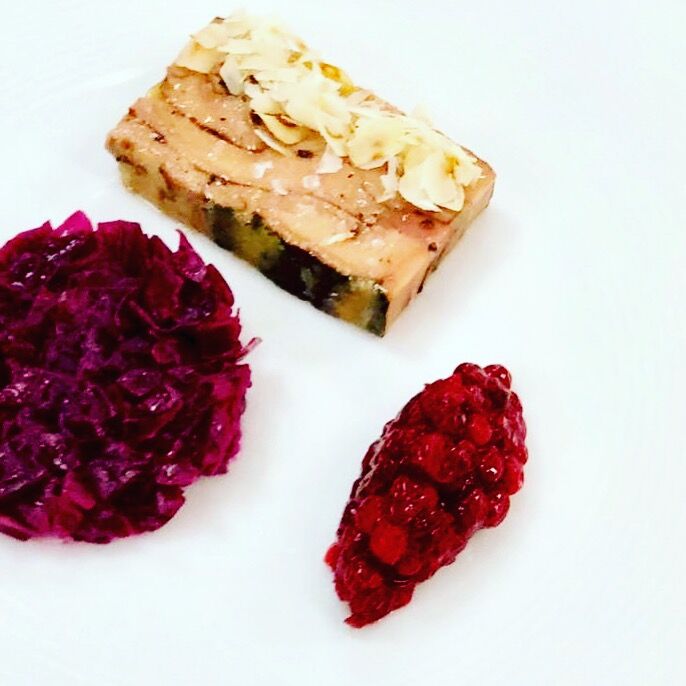 to be found on
competitors’ lists.
to be found on
competitors’ lists.
As most everywhere else, the price of dinner at Aureole has gone up, but not outrageously. Six years ago the fixed price was $89; now it’s $104, with a six-course tasting menu at $165, plus $85 for wines. My wife and I went for the latter and allowed sommelier Candace Olsen to choose the wines.
German-born Executive Chef Christopher Engel, with impressive credentials in European hotels and restaurants, follows the line Aureole has always maintained: cuisine based on a single main ingredient of impeccable quality enhanced with flavors that are both wholly complementary and somewhat unexpected. (By the way, the breads are addictive.)
We began with a creamy foie gras terrine (right) with summer’s pickled strawberries and a rhubarb compote with butter-rich toasted brioche. White asparagus (now past their season) came as a lustrous ivory velouté with the delightful surprise of goat milk ricotta ravioli and crunchy rosemary croutons.
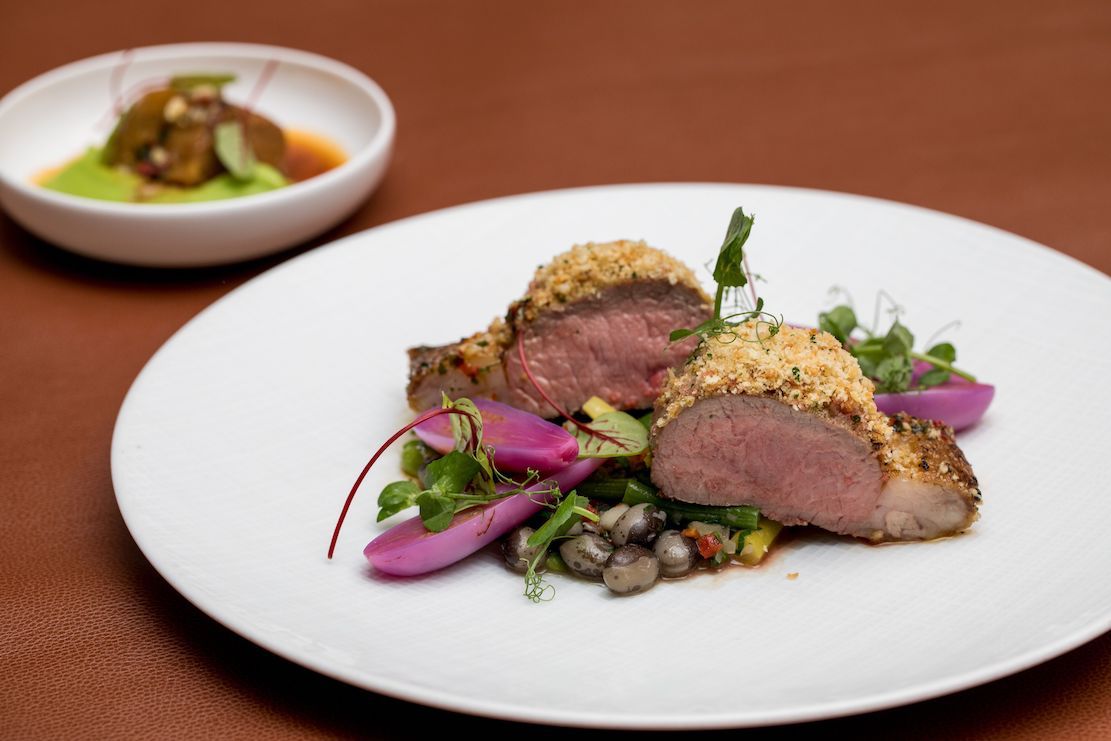 Everyone
has octopus on the menu now, but Engel’s is
slowly cooked and retains all its moistness,
served with the contrasts of pickled ramps, fava
beans and lightly smoked cherry tomatoes. Fine,
almost translucent, sea scallops were in full
summer mode, scented with minted peas, basil and
a lovely tomato broth.
Everyone
has octopus on the menu now, but Engel’s is
slowly cooked and retains all its moistness,
served with the contrasts of pickled ramps, fava
beans and lightly smoked cherry tomatoes. Fine,
almost translucent, sea scallops were in full
summer mode, scented with minted peas, basil and
a lovely tomato broth.
A rosy roasted lamb loin in a classic crust (left) was
the meat course, with a hearty bean cassoulet,
grilled asparagus, smoked eggplant and the
acidity of an Amalfi lemon—a dish somewhat out
of character and a bit heavy in texture. 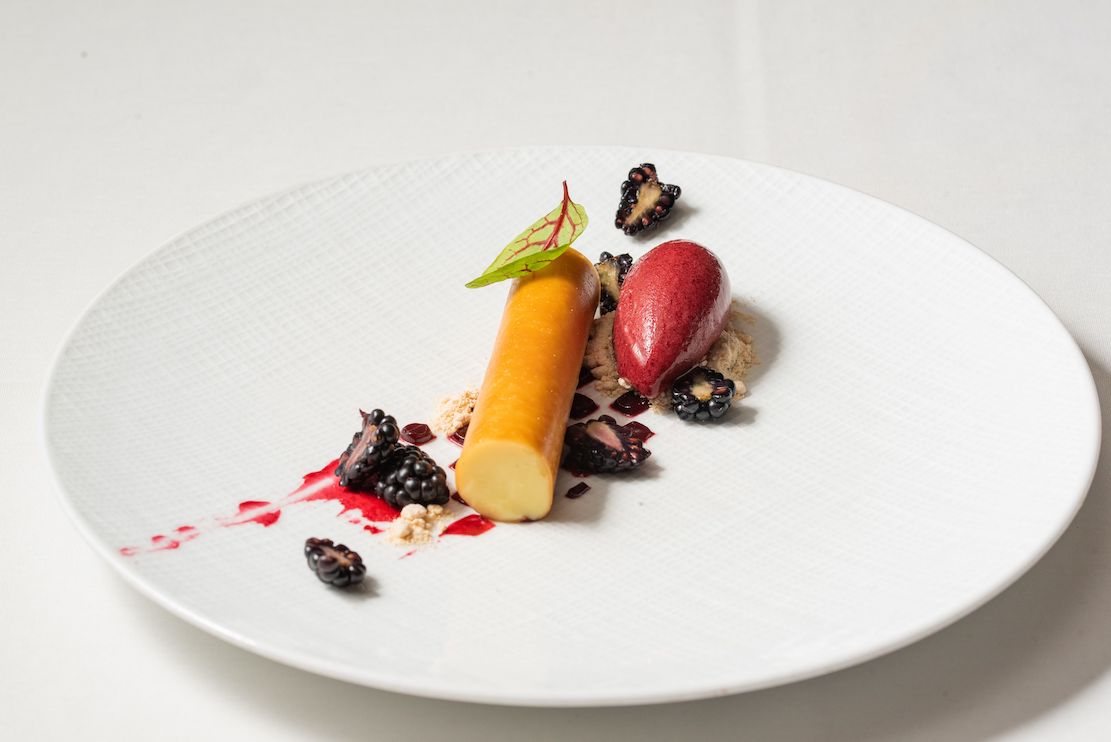
A perfect crème brûlée was brought for dessert, with the charming addition of caramelized white chocolate and a blackberry sorbet (right). Other desserts include a cherry pie with a caramelized pie crust, Morello cherries and sour cream sorbet, and a dish of rich coconut tres leches, mint and strawberry sorbet.
Readers of my articles know I arch an eyebrow at chefs who run multiple restaurants all over the map, and I can’t say how much time Charlie Palmer spends in New York overseeing Aureole. But the professionals he has in place, not least chef Engel, know what he wants and what he expects, which is precisely what I want and expect—and get—at Aureole.
Aureole is open for lunch Mon.-Fri. and for dinner Mon.-Sat.
❖❖❖
By Geoff Kalish

With
its chalky, weathered sandstone vineyards
stretching from just north of Florence to
slightly south of Siena, Italy’s Chianti
region has been producing wine since the
13th century. Yet wine from the area wasn’t
officially known as Chianti until the early
18th century, when producers around the
towns of Gaiole, Castellina and Radda formed
the “Lega de Chianti” in order to jointly
market their bottles. 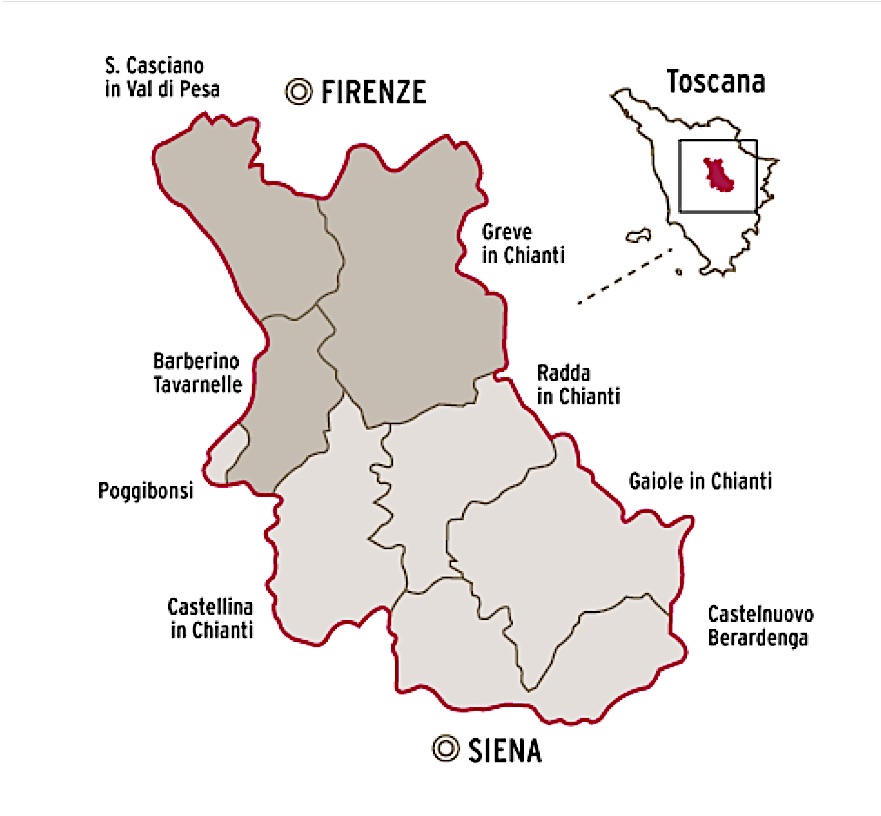 With
the increased popularity of the wine, other
producers outside these towns eventually
adopted the name “chianti” to assist
in marketing their wares. And by a
government edict, starting in the mid 19th
century the wine was required to be made
from a blend of grapes—the most common of
which were Sangiovese, Canaiolo, Trebbiano
and Malvasia.
With
the increased popularity of the wine, other
producers outside these towns eventually
adopted the name “chianti” to assist
in marketing their wares. And by a
government edict, starting in the mid 19th
century the wine was required to be made
from a blend of grapes—the most common of
which were Sangiovese, Canaiolo, Trebbiano
and Malvasia.
Unfortunately, many brands, particularly those that reached U.S. shores in the 1950s and ‘60s, were often flavorless, sometimes rancid, products that came in squat, straw-encased bottles (fiaschi) that, once emptied, were frequently used as candleholders on red-and-white-checkered-cloth-topped tables in more than a few Italian restaurants.
And, while in 1932 the “Chianti Classico” designation could be used only for wines produced in and around the original 18th century area, it was not until the late 1970s and ‘80s that a union of producers, “Consorzio del Vino Chianti Classico,” was formed to improve the quality and promote the wines of the demarcated Classico region, which currently includes over 500 producers. Now the wines from the area must contain at least 80% Sangiovese and no juice from “white” grapes, with three levels of wine specified: Chianti Classico; Chianti Classico Riserva; and Chianti Classico Gran Selezione, which must be made from at least 80% Sangiovese and only from “estate grown” grapes.
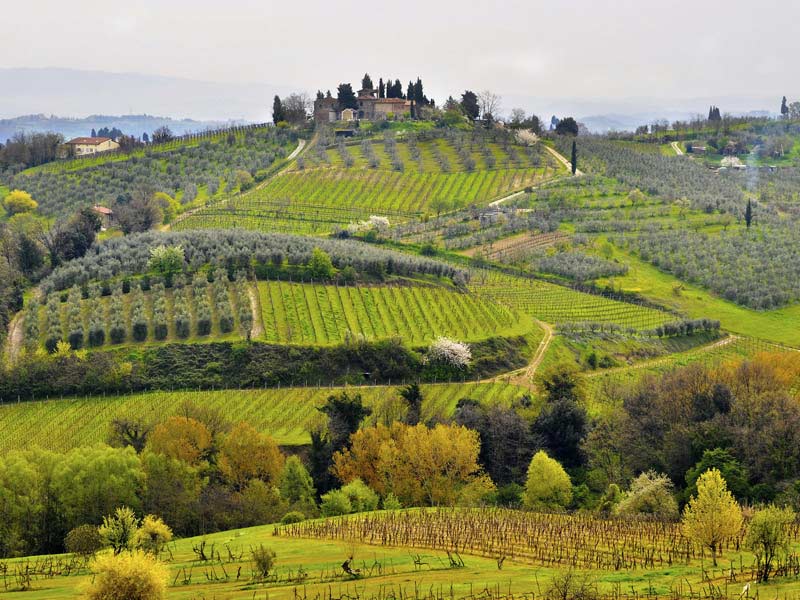 Of
note, in my opinion, while “riservas”
must be barrel aged for at least 24 months, as
compared with 4-7 months for “non-riservas,”
and Gran
Selezione must be aged for at least 30
months, aging is not necessarily tied to the
quality of the wine, with a number of riservas
outshining the more expensive Gran
Seleziones. However, these are all
usually wines of excellent quality, as
signified by their highest governmental
rating, DOCG, and noted by the Black Rooster (“Gallo
Nero”) on the neck of the bottle. Moreover,
Chianti Classicos are now bargains in
comparison with many of the overhyped,
so-called super Tuscans and “prized bottles”
from Italy’s Veneto and Piedmont regions.
Of
note, in my opinion, while “riservas”
must be barrel aged for at least 24 months, as
compared with 4-7 months for “non-riservas,”
and Gran
Selezione must be aged for at least 30
months, aging is not necessarily tied to the
quality of the wine, with a number of riservas
outshining the more expensive Gran
Seleziones. However, these are all
usually wines of excellent quality, as
signified by their highest governmental
rating, DOCG, and noted by the Black Rooster (“Gallo
Nero”) on the neck of the bottle. Moreover,
Chianti Classicos are now bargains in
comparison with many of the overhyped,
so-called super Tuscans and “prized bottles”
from Italy’s Veneto and Piedmont regions.
Based on a recent visit to the Chianti Classico region and a series of tastings over the past six months, the following 18 labels are my choices (by style) for sensibly priced Chianti Classicos available in the U.S market—albeit some of the Gran Seleziones may dent the wallet a bit.
Colle Bereto
LIGHTER
In general, these brands are rather simple and straightforward, with fragrant bouquets of ripe plums and an easy-drinking, pleasant taste with hints of raspberry and a smooth finish. Also, while rarely benefiting from bottle aging, these wines usually make excellent mates for hors d’ouevres ranging from mild cheeses to boiled shrimp and smoked salmon as well as everyday main course items like hamburgers and grilled chicken Caesar salad.
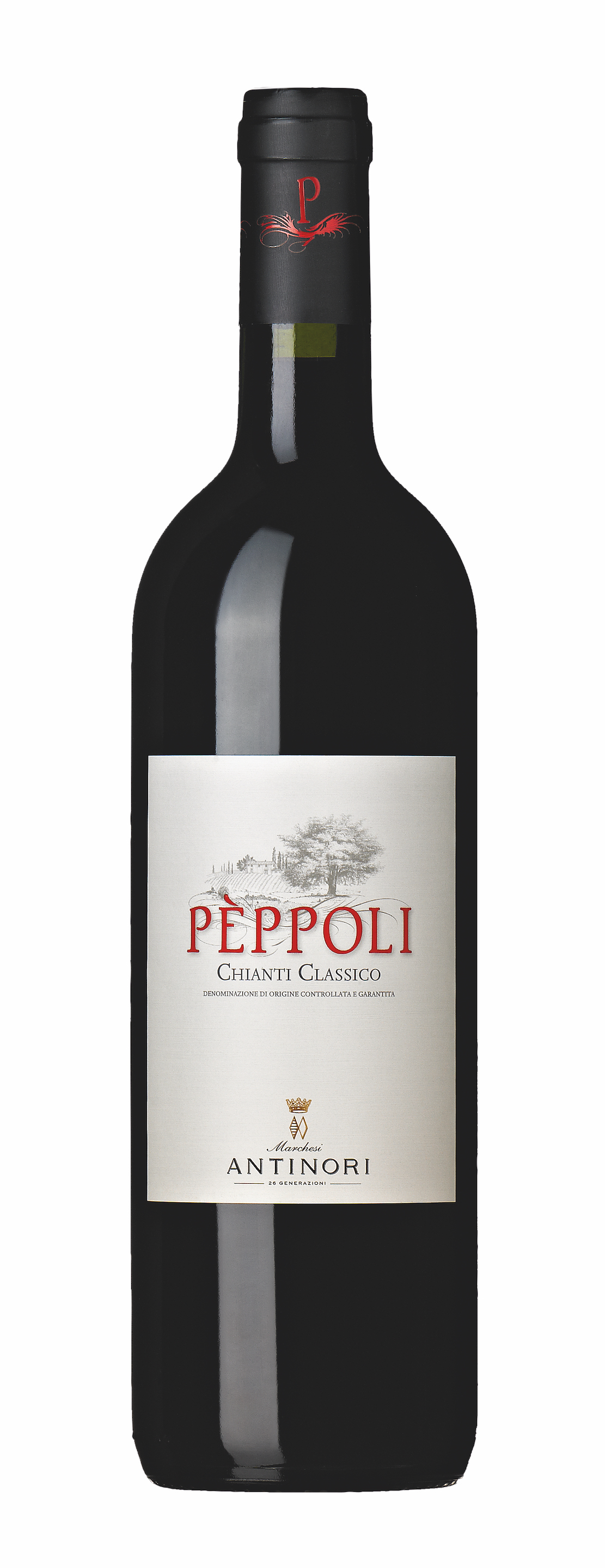 2016 Villa
Vignamaggio Chianti Classico (Terre di
Prenzano) ($25)
2016 Villa
Vignamaggio Chianti Classico (Terre di
Prenzano) ($25)
2017 Castello di Volpaia Chianti Classico ($16)
2017 Antinori Chianti Classico (Peppoli) ($15)
2016 Castello di Verrazzano Chianti Classico ($25)
2017 Castello di Ama Chianti Classico ($21)
MEDIUM-BODIED
The
hallmark
of these are the lively acidity in their
finish, and they range from those that show
concentrated flavors of plums and ripe
cherries with hints of herbs to those with
classic Burgundian flavors of strawberries and
undertones of violets and truffle (think
Chambolle-Musigny). Match these wines with
baked chicken, game birds, veal chops, or
pasta with truffles 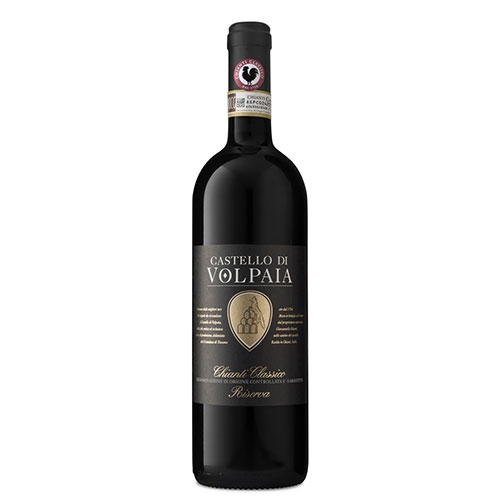 or
risotto with vegetables.
or
risotto with vegetables.
2016 Luiano Chianti Classico Riserva ($25)
2015 Castelli Villa Chianti Classico ($25)
2016 Castello di Volpaia Chianti Classico Riserva ($35)
2016 Felsina Chianti Classico Riserva (Berardenga) ($32)
2015 Antinori Chianti Classico Riserva ($48)
2015 Castello di Verrazzano Chianti Classico Riserva ($21)
2015 Fontodi Chianti Classico ($33)
FULL-BODIED
In
general,
these bottles show bouquets of cherries and
cassis with complex multilayered flavors of
exotic herbs, almonds and fruit, with a long
smooth finish. Most benefit from  some decanting or prolonged
swirling in the glass. Marry these wines with
beef (especially medium rare steak), lamb,
veal parmigiana, or pasta with red sauce or
seppia (cuttlefish with their ink).
some decanting or prolonged
swirling in the glass. Marry these wines with
beef (especially medium rare steak), lamb,
veal parmigiana, or pasta with red sauce or
seppia (cuttlefish with their ink).
2016 Luiano Gran Selezione (Ottantuno) ($55)
2013 Colle Bereto Riserva ($65)
2015 Fontodi Gran Selezione (Vigna de Sorbo) ($78)
2015 Castello di Verrazzano Gran Selezione (Sassello) ($29)
2015 Castello di Ama Gran Selezione (San Lorenzo) ($42)
2016 Felsina Chianti Classico Riserva (Rancia) ($55)
❖❖❖

GNARLY!
In Midgeville, GA, Kensli Taylor Davis said that
her mom ordered a cake from a local baker for her
upcoming 25th birthday party with the cake themed
around the Disney movie "Moana." The baker reportedly
misheard the mother and instead decorated the cake with
a cannabis leaf and a 'My Little Pony' character that
appeared to be stoned. "We weren’t mad about it or
anything," said Davis, "We thought it was funny so we
just ate it anyway!"
FOOD WRITING 101: STIFLE YOURSELF
“[At] an adobada taco from Tacos
1986, a stand that had been open for all of two
months, I’d seen its fire-kissed charms splashed
across my Instagram feed: the Tijuana al pastor taco
showcasing spit-roasted pork, chopped onions,
cilantro, and a daub of guacamole on a handmade corn
tortilla. . . . The lead taquero, a magnetic
performer who calls himself El Joy, smiled, flexed,
and made kissy faces for cameras in front of a
trompo stacked tall with glistening pork. As he
waved his knife, slices of roasted pork rained down
onto the flattop, each destined for a pliant
tortilla made by a pair of women working just off to
his right.”—Hillary Dixon, "Eater’s Best New
Restaurants in America," Eater. com (7/11/19).
❖❖❖
Any of John Mariani's books below may be ordered from amazon.com.
 The Hound in Heaven
(21st Century Lion Books) is a novella, and
for anyone who loves dogs, Christmas, romance,
inspiration, even the supernatural, I hope you'll find
this to be a treasured favorite. The story
concerns how, after a New England teacher, his wife and
their two daughters adopt a stray puppy found in their
barn in northern Maine, their lives seem full of promise.
But when tragedy strikes, their wonderful dog Lazarus and
the spirit of Christmas are the only things that may bring
his master back from the edge of despair.
The Hound in Heaven
(21st Century Lion Books) is a novella, and
for anyone who loves dogs, Christmas, romance,
inspiration, even the supernatural, I hope you'll find
this to be a treasured favorite. The story
concerns how, after a New England teacher, his wife and
their two daughters adopt a stray puppy found in their
barn in northern Maine, their lives seem full of promise.
But when tragedy strikes, their wonderful dog Lazarus and
the spirit of Christmas are the only things that may bring
his master back from the edge of despair. WATCH THE VIDEO!
“What a huge surprise turn this story took! I was completely stunned! I truly enjoyed this book and its message.” – Actress Ali MacGraw
“He had me at Page One. The amount of heart, human insight, soul searching, and deft literary strength that John Mariani pours into this airtight novella is vertigo-inducing. Perhaps ‘wow’ would be the best comment.” – James Dalessandro, author of Bohemian Heart and 1906.
“John Mariani’s Hound in Heaven starts with a well-painted portrayal of an American family, along with the requisite dog. A surprise event flips the action of the novel and captures us for a voyage leading to a hopeful and heart-warming message. A page turning, one sitting read, it’s the perfect antidote for the winter and promotion of holiday celebration.” – Ann Pearlman, author of The Christmas Cookie Club and A Gift for my Sister.
“John Mariani’s concise, achingly beautiful novella pulls a literary rabbit out of a hat – a mash-up of the cosmic and the intimate, the tragic and the heart-warming – a Christmas tale for all ages, and all faiths. Read it to your children, read it to yourself… but read it. Early and often. Highly recommended.” – Jay Bonansinga, New York Times bestselling author of Pinkerton’s War, The Sinking of The Eastland, and The Walking Dead: The Road To Woodbury.
“Amazing things happen when you open your heart to an animal. The Hound in Heaven delivers a powerful story of healing that is forged in the spiritual relationship between a man and his best friend. The book brings a message of hope that can enrich our images of family, love, and loss.” – Dr. Barbara Royal, author of The Royal Treatment.
 |
The Encyclopedia of American Food and Drink by John F. Mariani (Bloomsbury USA, $35) Modesty forbids me to praise my own new book, but let me proudly say that it is an extensive revision of the 4th edition that appeared more than a decade ago, before locavores, molecular cuisine, modernist cuisine, the Food Network and so much more, now included. Word origins have been completely updated, as have per capita consumption and production stats. Most important, for the first time since publication in the 1980s, the book includes more than 100 biographies of Americans who have changed the way we cook, eat and drink -- from Fannie Farmer and Julia Child to Robert Mondavi and Thomas Keller. "This book is amazing! It has entries for everything from `abalone' to `zwieback,' plus more than 500 recipes for classic American dishes and drinks."--Devra First, The Boston Globe. "Much needed in any kitchen library."--Bon Appetit. |
"Eating Italian will never be the same after reading John Mariani's entertaining and savory gastronomical history of the cuisine of Italy and how it won over appetites worldwide. . . . This book is such a tasteful narrative that it will literally make you hungry for Italian food and arouse your appetite for gastronomical history."--Don Oldenburg, USA Today. "Italian
restaurants--some good, some glitzy--far
outnumber their French rivals. Many of
these establishments are zestfully described
in How Italian Food Conquered the World, an
entertaining and fact-filled chronicle by
food-and-wine correspondent John F.
Mariani."--Aram Bakshian Jr., Wall Street
Journal.
"Equal parts
history, sociology, gastronomy, and just
plain fun, How Italian Food Conquered the
World tells the captivating and delicious
story of the (let's face it) everybody's
favorite cuisine with clarity, verve and
more than one surprise."--Colman Andrews,
editorial director of The Daily
Meal.com. "A fantastic and fascinating
read, covering everything from the influence
of Venice's spice trade to the impact of
Italian immigrants in America and the
evolution of alta cucina. This book will
serve as a terrific resource to anyone
interested in the real story of Italian
food."--Mary Ann Esposito, host of PBS-TV's
Ciao
Italia. "John Mariani has written the
definitive history of how Italians won their
way into our hearts, minds, and
stomachs. It's a story of pleasure over
pomp and taste over technique."--Danny Meyer,
owner of NYC restaurants Union Square
Cafe, The Modern, and Maialino.
|
 |
 |
 |
 |
 |
 |
 |
 |
 Everett Potter's Travel Report:
Everett Potter's Travel Report: 
 Eating Las Vegas
JOHN CURTAS has been covering the Las Vegas
food and restaurant scene since 1995. He is
the co-author of EATING LAS VEGAS – The 50
Essential Restaurants (as well as
the author of the Eating Las Vegas web site: www.eatinglasvegas.
He can also be seen every Friday morning as
the “resident foodie” for Wake Up With the
Wagners on KSNV TV (NBC) Channel 3 in
Las Vegas.
Eating Las Vegas
JOHN CURTAS has been covering the Las Vegas
food and restaurant scene since 1995. He is
the co-author of EATING LAS VEGAS – The 50
Essential Restaurants (as well as
the author of the Eating Las Vegas web site: www.eatinglasvegas.
He can also be seen every Friday morning as
the “resident foodie” for Wake Up With the
Wagners on KSNV TV (NBC) Channel 3 in
Las Vegas.
MARIANI'S VIRTUAL GOURMET
NEWSLETTER is published weekly. Publisher: John Mariani. Editor: Walter Bagley. Contributing Writers: Christopher Mariani,
Robert Mariani, Misha Mariani, John A. Curtas, Gerry Dawes, Geoff Kalish,
and Brian Freedman. Contributing
Photographer: Galina Dargery. Technical
Advisor: Gerry
McLoughlin.
If you wish to subscribe to this
newsletter, please click here: http://www.johnmariani.com/subscribe/index.html
© copyright John Mariani 2019

